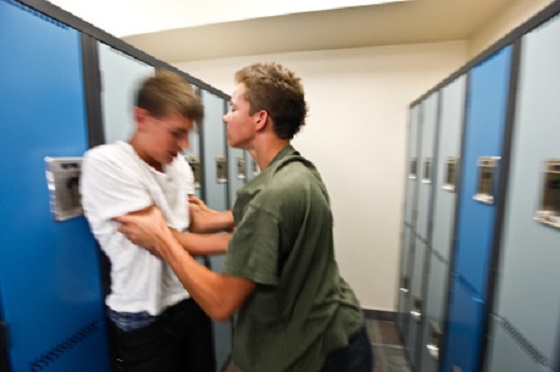Education
‘Grade inflation’ gives students false sense of their academic abilities

From the Fraser Institute
The average entrance grade at the University of British Columbia is now 87 per cent, up from 70 per cent only 20 years ago. While this is partly because the supply of available university spots has not kept pace with growing demand, it’s also likely that some B.C. high schools are inflating their students’ grades.
Suppose you’re scheduled for major heart surgery. Shortly before your surgery begins, you check into your surgeon’s background and are pleased to discover your surgeon had a 100 per cent average throughout medical school. But then you learn that every student at the same medical school received 100 per cent in their courses, too. Now you probably don’t feel quite as confident in your surgeon.
This is the ugly reality of “grade inflation” where the achievements of everyone, including the most outstanding students, are thrown into question. Fortunately, grade inflation is (currently) rare in medical schools. But in high schools, it’s a growing problem.
In fact, grade inflation is so prevalent in Ontario high schools that the University of Waterloo’s undergraduate engineering program uses an adjustment factor when evaluating student applications—for example, Waterloo might consider a 95 per cent average from one school the equivalent of an 85 per cent average from another school.
Grade inflation is a problem in other provinces as well. The average entrance grade at the University of British Columbia is now 87 per cent, up from 70 per cent only 20 years ago. While this is partly because the supply of available university spots has not kept pace with growing demand, it’s also likely that some B.C. high schools are inflating their students’ grades.
Sadly, grade inflation is so rampant these days that some school administrators don’t even try to hide it. For example, earlier this year all students at St. Maximilian Kolbe Catholic High School in Aurora, Ontario, received perfect marks on their midterm exams in two biology courses and one business course—not because these students had mastered these subjects but because the York Catholic District School Board had been unable to find a permanent teacher at this school.
The fact that a school board would use grade inflation to compensate for inadequate instruction in high school tells us everything we need to know about the abysmal academic standards in many schools across Canada.
And make no mistake, student academic performance is declining. According to results from the Programme for International Assessment (PISA), math scores across Canada declined from 532 points in 2003 to 497 points in 2022 (PISA equates 20 points to one grade level). In other words, Canadian students are nearly two years behind on their math skills then they were 20 years ago. While their high school marks are going up, their actual performance is going down.
And that’s the rub—far from correcting a problem, grade inflation makes the problem much worse. Students with inflated grades get a false sense of their academic abilities—then experience a rude shock when they discover they aren’t prepared for post-secondary education. (According to research by economists Ross Finnie and Felice Martinello, students with the highest high school averages usually experience the largest drop in grades in university). Consequently, many end up dropping out.
Grade inflation even hurts students who go on to be academically successful because they suffer the indignity of having their legitimate achievements thrown into doubt by the inflated grades of other students. If we want marks to have meaning, we must end the practise of grade inflation. We do our students no favours when we give them marks they don’t really deserve.
Just as our confidence in a surgeon would go down if we found out that every student from the same medical school had a 100 per cent average, so we should also question the value of diplomas from high schools where grade inflation is rampant.
Author:
David Clinton
Why Are Ontario’s Public Schools So Violent?


 David Clinton
David Clinton
Ontario’s Auditor General just released a performance audit on the Toronto District School Board. I’m sure it’ll surprise exactly no one that “financial and capital resources are not consistently allocated in the most cost-effective or efficient way” or that “The effective management of operations was not always being measured and assessed for internal decision-making”.
And there was plenty of institutional chaos:
“Between 2017/18 and 2022/23…about 38% of TDSB schools did not report conducting the minimum number of fire drills required by the Ontario Fire Code annually, and about 31% of TDSB schools did not report conducting the minimum number of lockdown drills required by TDSB policy annually. The TDSB does not have an effective process to ensure the required number of drills are performed by each school, each year, or that they are performed in accordance with TDSB policy when performed.”
What else would you expect from a massive government bureaucracy that employs 40,000 people, spends $3.6 billion annually and – based on many of the highlighted items on their website – is laser-focused on pretty much anything besides education?
What you might not have seen coming was that around half of the report centered on in-school violence. To be sure, we’re told that there were only 407 violent events reported to the board during the 2022/2023 school year – which is a rate of around 17 events for every 10,000 students. 17:10,000 doesn’t exactly sound like an environment that’s spiraling out of control.
There was a caveat:
“Due to input errors by principals, the TDSB underreported the number of violent incidents that occurred between 2017/18 to 2021/22 to the Ministry by about 9%.”
Ok. But we’re still nowhere near Mad Max levels of violence. So what’s attracting so much of the auditor’s attention? Perhaps it’s got something to do with a couple of recent surveys whose results don’t quite match the board’s own records. Here’s how the audit describes the first of those:
“The 2022/23 TDSB Student and Parent Census was responded to by over 138,000 students, parents, guardians and caregivers. It showed that 23% of students in Grades 4 to 12 that responded to the survey said they were physically bullied (e.g., grabbed, shoved, punched, kicked, tripped, spat at), and about 71% stated they were verbally bullied (e.g., sworn at, threatened, insulted, teased, put down, called names, made fun of). Further, about 14% of student respondents indicated they had been cyberbullied. TDSB’s central tracking of all bullying incidents is much lower than this, suggesting that they are not centrally capturing a large number of bullying incidents that are occurring.”
“23% of students in Grades 4 to 12 that responded to the survey said they were physically bullied”. That’s not a great fit with that 17:10,000 ratio, even if you add the 9 percent of underreported incidents. And bear in mind that these students and their families were willing to discuss their experiences in a survey run by the school board itself, so it’s not like they’re hard to find.
But that’s not the worst of it. The Elementary Teachers’ Federation of Ontario (ETFO) ran their own survey in 2023. They wanted to hear about their members’ experiences with workplace violence. Here, quoting from the audit report, is what TDSB respondents told them:
- 42% had experienced physical force against themselves in 2022/23;
- 18% had experienced more than 10 of these physical force incidents in 2022/23;
- 81% indicated the number of violent incidents increased since they started working;
- about 77% responded that violence was a growing problem at their school;
- about 29% indicated they had suffered a physical injury;
- 57% had suffered a psychological injury/illness (such as mental stress, psychological or emotional harm) as a result of workplace violence against them; and
- about 85% indicated that violence at their school made teaching and working with students more difficult.
29 percent of teachers suffered a physical injury due to workplace violence. That’s elementary school teachers we’re talking about.
For perspective, even accounting for the 9 percent underreporting, the TDSB was aware of events impacting less than a quarter of a percentage point of their students (and apparently didn’t report any violence against teachers). But by their own accounts, 23 percent of all students and 42 percent of elementary teachers have suffered attacks. Are board officials willfully ignoring this stuff?
And if only there was some way to address violence and other criminal activities on school property. Perhaps – and I’m just spitballing here – there could even be people working in schools whose job it would be to (what’s the word I’m looking for?) police crime.
On a completely unrelated note, back in November, 2017, the Toronto District School Board voted 18-3 to permanently end their School Resource Officer (SRO) program. Since then, police officers have been unwelcome on board property.
To be sure, the TDSB has “accepted” all 18 of the report’s recommendations. But talk is cheap. Who’s to say that commitment won’t play out the same way we’ve seen with their fire drill compliance.
Can you spell “class action lawsuit”?
Education
Students can’t use AI to cheat on standardized tests

From the Fraser Institute
As the schoolyear winds down, many students across Canada will hand in their final assignments and write their final exams. Cutting corners and outright cheating in school is easier than ever. If you need to write an essay, just plug in the assignment instructions and let artificial intelligence (AI) write it for you.
A recent New York Magazine article provided numerous examples of college students using AI to write formal essays, generate programming code, and even draft personalized notes. Whether you need help creating an outline, finding relevant sources or writing an introduction, AI can do all these things and more.
Many K-12 students also use AI for their assignments. Anyone who is worried about being caught just needs to tell ChatGPT (or whichever AI program they use) to make it look like the essay was written by a high school student.
Catching cheaters is nearly impossible—and it’s getting harder as AI gets increasingly sophisticated. Even so-called AI detectors like Turnitin, which scan essays for patterns that indicate the use of AI, are far from perfect. In other words, there’s no easy or low-cost way to prevent students from using AI on their homework assignments.
Obviously, this is a significant problem. If students use AI to do most of their homework, they aren’t going to learn important academic skills. This does not bode well for their future or the general productivity of our labour force.
Fortunately, there’s one academic measurement tool available that AI cannot interfere with—in-person standardized tests, which are administered to all students in a particular grade at the same time and are assessed by outside evaluators using consistent criteria. They can be grade-level tests or exams that are required for graduation.
For example, Grade 12 students in Alberta must write diploma exams in core subjects such as English language arts, mathematics, social studies and science. These exams are created by the provincial Ministry of Education and are marked centrally by a group of teachers. They count for 30 per cent of a student’s final grade, with the remaining 70 per cent coming from the school-awarded mark.
Because all students must write the same exam and are evaluated according to the same standard, it’s possible to objectively determine whether students have met the appropriate academic outcomes. Importantly, students cannot use AI when writing these exams since all diploma exams are strictly supervised.
Thus, even if some students had, for example, used AI to write their English essays at home, their diploma exam marks will reveal the true level of their writing ability. If there are significant discrepancies between the diploma exam mark and the school-awarded mark, this can indicate where changes need to be made.
Unfortunately, many provinces do not have diploma exams, and this leaves their schools more susceptible to cheating with AI. For example, while British Columbia requires all Grade 12 students to write (but not pass) a literacy assessment, this assessment does not count toward a student’s final grade. Even worse, the assessment is “not based on a particular subject matter or course.” Thus, the B.C. literacy assessment has little value in combating the problem of AI cheating. This puts the burden of catching cheaters entirely on teachers and principals.
To make matters worse, standardized testing is on the decline across the country. Over the last decade in most provinces, standardized tests have been administered at fewer grade levels, given less value by provincial governments, and turned into non-content specific assessments. This is exactly the wrong direction.
If provincial education ministries are serious about maintaining academic standards, they must ensure that students write standardized tests at multiple grade levels and in a variety of subjects. Students need to know that their performance on these tests will impact their final marks and that they only hurt themselves academically if they get AI to do their work for them.
When it comes to AI, we cannot put our heads in the sand. Since AI isn’t going away, it’s important that we assess students with measurement tools where students cannot use AI to cheat.
Instead of moving away from standardized testing, every province should embrace and enhance this important measurement tool. It’s the best way to ensure all students meet basic academic standards.

Michael Zwaagstra
Senior Fellow, Fraser Institute
-

 espionage2 days ago
espionage2 days agoFrom Sidewinder to P.E.I.: Are Canada’s Political Elites Benefiting from Beijing’s Real Estate Reach?
-

 Bruce Dowbiggin2 days ago
Bruce Dowbiggin2 days agoFUBAR: How Trudeau & Trump Rewrote This Century’s Political Handbook
-

 Alberta2 days ago
Alberta2 days agoAlberta’s carbon diet – how to lose megatonnes in just three short decades
-

 Business2 days ago
Business2 days agoSenator wants to torpedo Canada’s oil and gas industry
-

 Energy2 days ago
Energy2 days agoWho put the energy illiterate in charge?
-

 Agriculture2 days ago
Agriculture2 days agoUnstung Heroes: Canada’s Honey Bees are not Disappearing – They’re Thriving
-

 espionage2 days ago
espionage2 days agoFBI Buried ‘Warning’ Intel on CCP Plot to Elect Biden Using TikTok, Fake IDs, CCP Sympathizers and PRC Students—Grassley Probes Withdrawal
-

 David Clinton2 days ago
David Clinton2 days agoWhy Are Ontario’s Public Schools So Violent?







